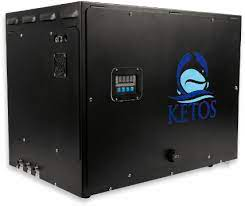Remotely Measure Levels of TDS in Water
Monitoring Water for Total Dissolved Solids With KETOS SHIELD
Accurately Measure Levels of TDS in Water
Download our KETOS SHIELD overview to learn how:
- Users are able to remotely monitor for 30+ water parameters (including dissolved solids) 24/7/365
- KETOS can produce lab-accurate results in real-time and deliver results right to a water operator wherever they are (via cloud-enabled connectivity)
- A single system can eliminate the need for manual testing and third-party lab analysis - saving time and labor costs
- Real-time monitoring allows for real-time decision-making, helping organizations protect their equipment and prevent unnecessary downtime
Learn To Automate Total Dissolved Solids Testing In Water With Lab-Accurate Results in Real-Time
"*" indicates required fields
Testing for Total Dissolved Solids in Water
 KETOS SHIELD gives results for dozens of water testing parameters in real-time. Automate your process and lower up-front costs with our industry-leading $0-CAPEX subscription model.
KETOS SHIELD gives results for dozens of water testing parameters in real-time. Automate your process and lower up-front costs with our industry-leading $0-CAPEX subscription model.
Our proprietary intelligent water management solution, KETOS SHIELD, provides customizable monitoring for dissolved solids and 30+ other parameters (such as heavy metals and inorganic materials). Monitoring happens via an interoperable system that uploads data to the cloud for secure access from anywhere, helping water operators monitor results around the clock, even when they are off-site.
Why Monitor Water for Total Dissolved Solids with KETOS
Taste is one of many reasons organizations may want to monitor for Total Dissolved Solids. . Typically, the total Dissolved Solids’ acceptance level (as far as taste is concerned) is around 300 mg/L. Unacceptable levels of Total Dissolved Solids for taste lie somewhere around 1200 mg/L. However, extremely low levels may also affect flavor, as it may cause water to feel flat.
In industrial and production applications, components (such as magnesium and calcium) may also affect corrosion or buildup in water infrastructure. Higher levels, for example, 500 mg/L and up, may cause scaling in pipes, boilers, and water heaters. This can create downtime or shorten the lifespan of the equipment.
What are the Issues with Total Dissolved Solids in Water?
Total Dissolved Solids (TDS) in water refer to the sum of all inorganic and organic substances that are dissolved in water, typically including minerals, salts, metals, and organic compounds. While some level of TDS is natural and necessary for water quality, elevated concentrations can lead to various challenges and concerns. Here are key issues associated with Total Dissolved Solids in water:
- Health Risks: High levels of TDS in drinking water can pose health risks to humans, particularly when it exceeds recommended guidelines. Elevated TDS concentrations may indicate the presence of harmful contaminants such as heavy metals, organic pollutants, and microbial pathogens. Chronic exposure to these substances through drinking water consumption can lead to adverse health effects, including gastrointestinal issues, kidney damage, and neurological disorders.
- Taste and Odor: Water with elevated TDS concentrations may exhibit undesirable taste and odor characteristics. Dissolved minerals and salts can impart a salty, brackish, or metallic taste to water, making it unpalatable for drinking and cooking. Additionally, organic compounds and microbial byproducts may contribute to off-flavors and odors, further detracting from water quality and consumer acceptance.
- Scaling and Corrosion: High TDS levels in water can contribute to scaling and corrosion in plumbing fixtures, appliances, and industrial equipment. Dissolved minerals such as calcium carbonate and magnesium sulfate can precipitate out of solution and form scale deposits on surfaces, reducing water flow rates and impairing equipment performance. Corrosive ions present in TDS can accelerate metal corrosion, leading to leaks, pipe failures, and infrastructure damage.
- Environmental Impact: Elevated TDS concentrations in surface water bodies can have adverse effects on aquatic ecosystems and biodiversity. Increased TDS levels can alter water chemistry, affect aquatic habitat suitability, and disrupt ecological processes. Some aquatic organisms may be sensitive to changes in TDS concentrations, leading to population declines and shifts in species composition.
- Water Treatment Challenges: Removing TDS from water sources can be challenging, as it involves the removal of a wide range of dissolved substances. Conventional water treatment methods such as coagulation, sedimentation, and filtration may be insufficient for TDS removal. Advanced treatment technologies such as reverse osmosis, ion exchange, and distillation may be required to reduce TDS concentrations to acceptable levels.
- Regulatory Compliance: Governments and regulatory agencies establish guidelines and standards for TDS levels in drinking water to protect public health and ensure water quality. Compliance with these regulations requires water utilities and treatment facilities to monitor TDS concentrations regularly, implement appropriate treatment processes, and maintain records to demonstrate compliance with regulatory requirements.
Causes of Total Dissolved Solids in Water
Total Dissolved Solids (TDS) in water represent the cumulative concentration of inorganic and organic substances dissolved in it. Natural sources of TDS include weathering and erosion of rocks and soils, which release minerals such as calcium, magnesium, sodium, and potassium into water bodies. Groundwater, in particular, can acquire high TDS levels as it percolates through geological formations, picking up dissolved salts along the way. Surface water can also accumulate TDS through runoff from agricultural fields, urban areas, and industrial sites, carrying pollutants and salts into rivers, lakes, and streams. Human activities such as mining, industrial discharges, and wastewater effluents further contribute to elevated TDS levels in water. Excessive TDS concentrations can degrade water quality, affect aquatic habitats, and impact human health, underscoring the importance of monitoring and managing TDS levels in water resources.
Acceptable Levels of Total Dissolved Solids in Water by Industry
Total Dissolved Solids (TDS) refer to the amount of inorganic and organic substances dissolved in water. Different industries have varying acceptable levels of TDS in water based on their specific requirements and processes. For example, the acceptable TDS levels for drinking water are generally lower compared to those for industrial use. In the food and beverage industry, strict regulations govern TDS levels to ensure product quality and safety. Similarly, in industries such as agriculture and pharmaceuticals, TDS levels are closely monitored to prevent adverse effects on crops and products. Proper management of TDS levels is crucial to maintaining water quality and preserving ecosystem health.
| Industry | Acceptable TDS Levels (ppm) |
|---|---|
| Drinking Water | Less than 500 |
| Food and Beverage | 500 – 1000 |
| Agriculture | 1000 – 2000 |
| Pharmaceuticals | Less than 1000 |
How to Easily Monitor Water for Total Dissolved Solids
Instead of measuring total dissolved solids with a meter that only measures a handful of conditions; the KETOS SHIELD is capable of mentoring dozens of water related issues — in real-time. Gain insights on total dissolved solids in your water infrastructure – but don’t stop there. With KETOS, an extensive list of water testing parameters are at your fingertips.
While understanding total dissolved solids in your water infrastructure is vital, KETOS offers far-reaching capabilities beyond. Explore an extensive array of water testing parameters conveniently accessible through our platform. Empower your organization with comprehensive insights for proactive water quality management and regulatory compliance.
If you need to measure Total Hardness in tap water, sulfates in groundwater, or zinc in the automotive industry, KETOS’ automated water monitoring will save time and reduce regulatory issues.
What Water Quality Parameter Do You Test Most Often?
The KETOS SHIELD remotely monitors dozens of water quality parameters. Which one do your water operators test most often?
KETOS Awards
















About KETOS
KETOS is a fully integrated platform that combines hardware, software, connectivity, automated reporting, predictive analytics, and maintenance to automate water monitoring and testing. KETOS enables water operators to identify and solve mission-critical water efficiency and quality challenges in real-time, or before they happen through predictive algorithms, to ensure that water meets specific quality and safety standards.

